French vineyards
Avize, unity in diversity
This article was originally published in Fall 2015, R&B n°118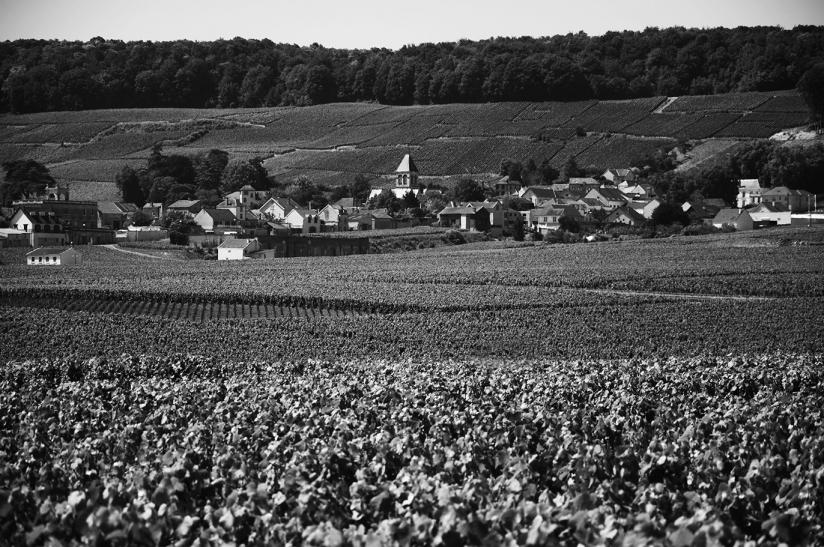
Champagne > Côte des blancs > Avize
Why do Avize wines often have a surplus of salinity and noble acidity compared to wines from neighboring villages? This is one of our major questions, whether in champagnes or still wines. Is it an effect of the terroir, a consequence of the choice of plant material, a result of cultural practices and methods of vinification and elaboration of champagne?
Avize and the others…
On the purely geological level, there are no fundamental differences between the terroirs of Avize and those of Cramant in the north or Oger in the south. The boundaries of the communes date from the French Revolution and are somewhat arbitrary. Arriving from the north by the D9, it is a road dating from the Revolution, concretized by a large stone, which marks the border with Avize, the cadastral names of the neighboring plots being sometimes identical. Still north but further east, the area of Chemins de Chalons runs on Cramant, Avize and also Oiry. To the south, the wood path separates Avize d'Oger but all the parcels named Pierres Vaudons extend over these two communes without real changes of soil. All the vines of the Grands Crus of the Côte des Blancs are based on Campanian chalk (about 80 million years BC) consisting of calcareous skeletons of billions of uncemented microscopic algae. This soft, porous material with 40% of vacuum, friable and fragmentable, absorbs and restores the water, thus ensuring a regular supply of the vine which the man has contributed to improve by the drainage, in particular in the northern part of Avize. . It turns out that the soil avizois have a good ressuyer capacity, thus avoiding that the vine has "feet in the water".
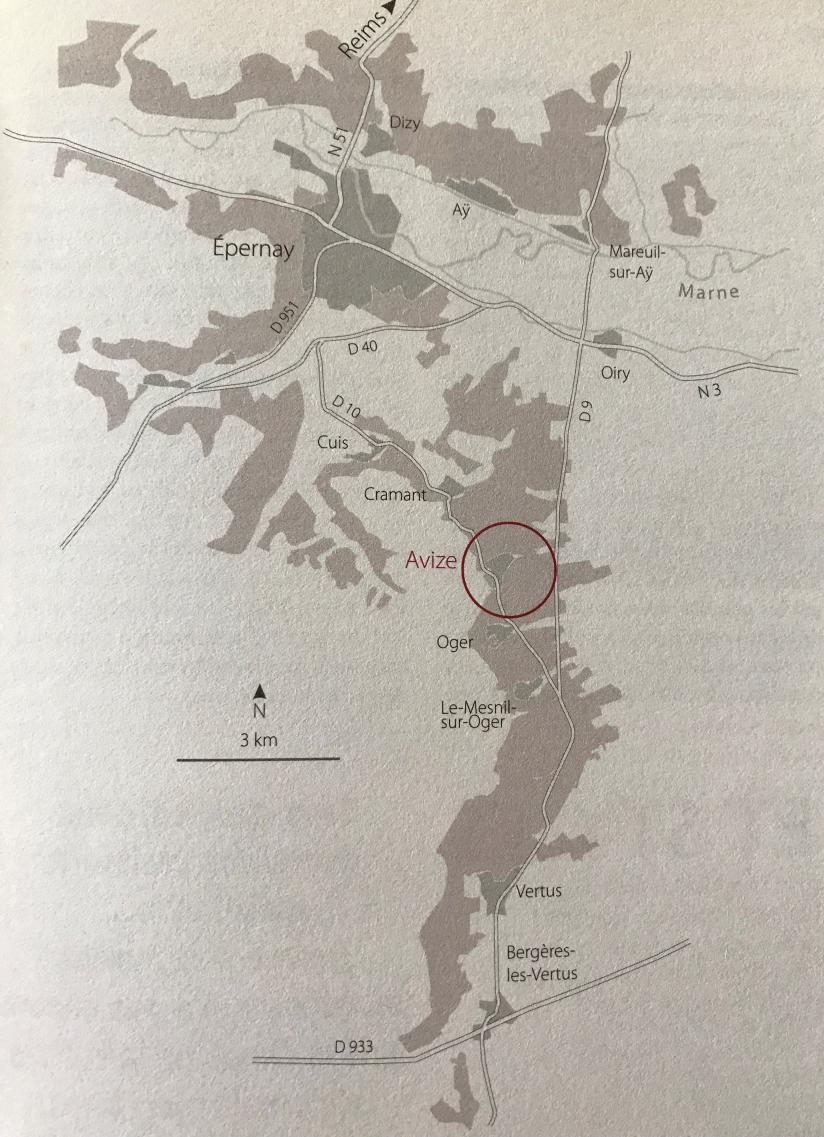
Terroirs and specificities
The phenomenon of solifluction - accelerated form of mass descent of materials appearing under the effect of freeze / thaw cycles - is more frequent in Avize than in neighboring communes; slices of soil, layers have gradually been created where the rootlets penetrate and absorb the minerals better thanks to the slump faults of the chalk, provided that the soil is alive. This phenomenon could contribute to favor the expression of the terroir, its complexity, in association with a sensation of minerality or salinity.
Some think that most of the terroirs of the commune are equal and that the difference comes mainly from the work of men - cultural choices and plant material, rootstock and grafts. Others claim that there is a historic heart, which is located at the village level from the lower part of Clos Jaquin on the west hillside, then east with the Champs, the Avats, part of the Maladries (or Maladrerie ), la Fosse and the chemin de Flavigny ..., which does not mean that the other terroirs demerit. Note also the presence of a "corridor" of powdery mildew, mainly on the high plots, which can spread if the treatments are not adequate.
It appears that at the top of the hill, where the soil is compact and the chalk outcropping, the wine can be dry, tense, severe and especially when a wood overlooks the vineyards. At the bottom of the hill, with chalk gravel ("graveluches") and a little clay, the wines are more flexible, easier, although the frost is more frequent. We can therefore imagine an analogy with the contrast between the wines of Cramant, quite tense, located on a hilltop, and those of Oger, wider, located lower ... And it is at the foot of the hill that the salinity and the minerality would express itself best. These observations are not specific to Avize, as the same observations could apply elsewhere, especially in Burgundy with Premiers Crus at the top, Villages at the bottom and Grands Crus in the foot / middle of the hillside.
Soils workability and organic or biodynamic practices
Many soils are still chemically weeded - especially those sold by grape dealers per kilo - or covered with bark, which avoids weeding but could pollute. However, most areas are planning to stop weedkillers in the short or long term, a change in the required legislation. Only the parcels of the estates of Pascal Agrapart, Anselme Selosse and Erick de Sousa have been worked for a long time, the three areas being certified or practicing a "clean" viticulture of biological and / or biodynamic inspiration. The importance of tillage - of "charrutage" to take a pictorial expression - is well perceived by the family domains since the beginning of 2010, but also by the large Champagne houses of Reims or Épernay, such as Taittinger or especially Roederer who makes work some plots to the horse in a process of biodynamic agriculture.
However, many remain cautious about the products and methods of treatment of organic farming, especially as the latter are more labor-intensive than conventional practices. To quote the speech of many conventional winemakers, the "bio" is more expensive and would lower yields without guarantee of increased quality and degrading the carbon footprint due to passages of more agricultural machinery. While organic can cost more - more human presence in the vineyard to observe and work - slightly degrade the carbon footprint if the treatments involve heavy machinery, but the preservation of the integrity of men has it really a price? In addition, the bio - in the broad sense - seems to be a factor of qualitative improvement, as the results of our collective tasting demonstrated.
Avize in brief...
270 ha of Chardonnay on the 5,610 ha (82% Chardonnay, 9% Pinot Noir and 9% Pinot Meunier) from the Côte des Blancs.
About 40 producers involved in different titles:
- marketing their production in full,
- selling totally or partially to trading,
- members of cooperative cellars.
- Many estates still sell grapes per kilo while bottling.
- Domains in Avize do not always have many vineyards in the town.
- Price per hectare doubled in 10 years, sometimes around 2 million euros.
- Old vineyard, in mass selection, a significant part of rootstock 41B.
- More and more frequent research of good maturity of the grapes - between 10.5 and 11 ° -, without chaptalisation.
ESTATES AND STYLES
The selection of the areas visited comes from the collective and blind tasting.
The great Champagne houses are absent from this tasting: they have many vines in Avize, but do not market "pure Avize" cuvée and integrate the grapes of this town in the so-called "Prestige" or "Blanc de Blancs" cuvées. "Whose composition is little known.
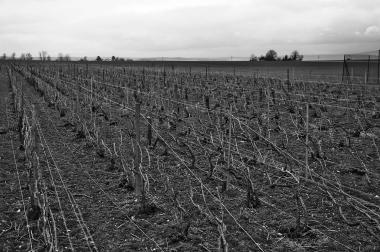
Champagne Jacquesson, Champ Caïn
The small plot of Champ Cain (1.20 ha) located east of the town of Avize and near Oiry - so remoted compared to the historic heart of this Grand Cru - has been the subject of specific marketing since the vintage 2002. From now on, the "700" vintages integrate the grapes of all the Avize vines except those of Champ Cain when this wine is produced, which is only the case in good year.
The vines, mainly planted in 1962 on rootstock 41B, produce an individualized wine like the other "micro-cuvées" of the Jacquesson house, based in Dizy. On clay-sandy and pebbly soil on the surface, the roots penetrate the chalk at about 40 cm deep. Soils are worked with plows and intercepts under the row - no chemical weeding - without considering animal traction for the moment. Here, the treatments are not organic, even if the beginning of campaign favors the use of such products until the flower. Then, use penetrating treatments against powdery mildew sometimes in this sector. Anti-rot treatments have been stopped for a long time, the size Chablis, aerated with 3 frameworks at the maximum for a goal of 12 buds per foot, contributing strongly and the annual production oscillates between 10 000 and 12 000 kg / ha.
The grape harvest - according to the health status of the grapes and the tasting of the berries - aims a good maturity, 11 ° natural, to avoid chaptalisation. They last only one day and the grapes are pressed in Avize in a vertical press of 4 000 kg before being transported to Dizy for the continuation of the operations. Only the cuvées and the first three presses are kept, the second juice being resold. The alcoholic fermentation is initiated by "active dry yeasts" and the malolactic fermentation - necessary in most cases - is carried out on the basis of a "foot of lightning", these two operations being conducted under wood. Follows an ageing on the lees with regular stirring in a cool environment. The wines are [tooltip: learned] (ie bottled) late (October / November of the following year) without adding SO2 or filtration. They are then rested 8 years on slats before being disgorged, adjusted to 10 mg / l of SO2 and slightly [tooltip: dosés] (Recall that the assay consists of the addition, before the definitive closure, of a certain dose of "Liqueur d'expédition" (old wine + sugar) Rigor and serious characterize this house!
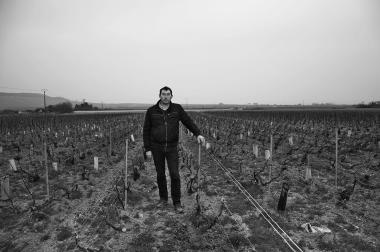
Champagne Larmandier-Bernier, Les Chemins d’Avize
This well-known area of Cramant, of fifteen ha, biodynamic for more than 20 years, sells since the vintage 2009 a vintage 100% grapes of Avize. The two plots concerned are located in the eastern center of the commune on the Terad of Maladrie, Flavigny and chemins de Plivot. The grapes were previously incorporated in the blend, but the owners decided to enrich the range of single-crowned champagnes for the 2009 vintage, the acquisition of a small press that facilitated this development. Two plots of 45 and 25 ares- mass selections of 1961 and 1955 on rootstock 41B - with fairly lean soils that produce little and need to be amended. Recovered in 1992 after a long chemical period, initially planned to be torn up - 25% of missing - these vines have been preserved for their great potential: today the soil cultivation, light ridging, is satisfactory, after a complex period of adjustment of the cutting instruments. The second juices are incorporated in the vintage and a huge cask of 20 hl as well as barrels are used. As always in this estate, alcoholic and malolactic fermentations are natural, that is to say with the only indigenous yeasts and bacteria. This wine, which is very lightly dosed, combines matter and complexity, but with less tension than in the 2010 vintage, recently glimpsed ...
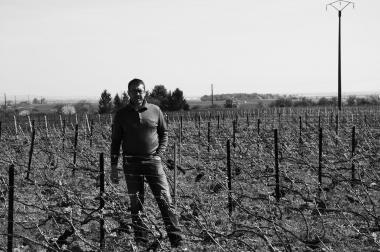
Champagne Agrapart
Since 2012 (see R & B No. 105), there are new things happening here. Probably the arrival in the more or less long term of one of the sons Agrapart, who is currently following a DNO at the Faculty of Oenology of Dijon, the other son still seeking his way, will she comfort or reassure Pascal on the future of the estate. In the same perspective of consolidation, note the acquisition of new micro-plots on Avize (4), Oger, Cramant and Oiry, bringing the surface area of the estate to nearly 12 ha, and also the development, extension of the Venus vintage at 60 acres, worked on the horse by a provider since the disappearance of the mare Venus. Although coming from communes classified as Grand Cru, the juices coming from new plots taken will not immediately integrate the heads of vintages but, in the meantime, the vintage 7 Crus: the vintner does not wish to extend its range. In addition, improved equipment with a new air-conditioned barrel cellar and compartmentalized stainless steel vats bring more comfort to everyday life. The design of the work has not changed, with, among other things, observation of the vineyard and the soil, plowing and composting (if necessary), treatments based on sulfur and copper, search for the right maturity of the grapes, vinification little interventionist, various assays of dosage ...
The Avizoise vintage still comes from the Voies d'Épernay and Robards plots located north of the commune of Avize on clay soils with 55- and 40-year-old vines, whereas Venus comes from vines of more than 55 years old located in the area. plot La Fosse (Les Pourceaux), rather in the center of the village, with more calcareous soils.
After the collective tasting, it seemed to us that the work of Pascal Agrapart had progressed further with the 2008 vintage, tasted several times in recent months. And some of the vintages of the 2009 vintage that were recently tasted seem very promising! Ransom of success, the area receives almost no more visits and redirects buyers to its network of wine merchants.
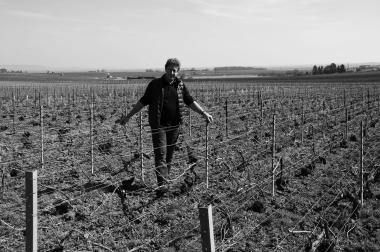
The work and "philosophy" of Anselme Selosse, who leads the estate with the growing involvement of his son Guillaume, are well known. Few things have changed in 9 years (see R & B no 80, spring 2006) - work in the vineyard always in a biological / biodynamic perspective without "getting locked up" in a certification, and vinification / aging in barrels -, with a observation of all the parameters in the vineyard and the cellar. The land has changed somewhat thanks to the acquisition of 0.80 ha in 4 micro-plots and the uprooting of a few acres of vines. Globally, the 8.2 ha of the estate are split half on Avize and half on other Côte des Blancs communes - Oger, Le Mesnil sur Oger and Cramant - and, in a minority of Pinot Noir, on Aÿ, Mareuil and Ambonnay. . The plots of Avize are spread over the whole of the town, with the exception of the area of Avats and Oaks. The initial cuvées - rather vineyards at the bottom of slopes - and VO (original version) - vines at the foot of hillsides or slopes (Barmonts, Clos Jaquin ...) - contain grapes from Avize, but not only. Only the cuvees Substance (solera grapes mainly from the sector of the Monts de Cramant), Avize (assembly of different areas of the town) and Chantereine - mono-plot recently created by isolating part of the vineyards of this locality to put especially complex clays from the soil or down hillsides - are "pure" Avize. Soils are grassed, "the grass is only the expression of a place and competition only embarrassing during the flower," according to the winemaker. They are also worked - "to see what happens there" -, with the plow in Avize and the horse in Aÿ or Ambonnay, but taking care not to destructure the soil considered as a biotope, a place of life. Some amendments made from sheep manure composted with very little nitrogen can be made, if necessary. Futures Anselme Selosse wishes to redensify his vineyard by reaching or exceeding 11,000 feet / ha. In the vat room, two inclined presses with parallel plates, fermentations without inputs except sometimes an adjuvant for the alcoholic fermentation, no settling except exceptional case. The addition of sulfur to the flow of the juice depends on the health status of the harvest and the pH. Dispensing liquor doses are always very low, in short, nothing is set in stone and the winemaker is constantly listening to its terroir and its wines ...
The wines are still exciting to taste but some wines may require a lot of attention to the tasters unaccustomed to these champagnes. It should be noted that the estate receives few visits and generally sells wines only through specialist wine shops.
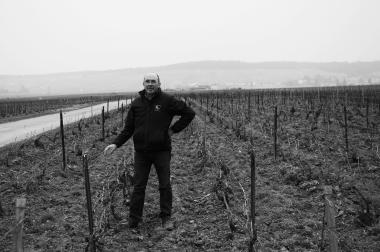
Champagne De Sousa
In recent years, most soils have been plowed with horses, but treatments remain mechanized, chase or caterpillar. The family owns on Avize several parcels that are part of the Cuvée des Caudalies: places called La Fosse, Haut Nemery, Les Pierres Vaudon ..., completed by some plots bordering Oger. The De Sousa range is constantly evolving such as the recent vintage Umami, a future solera, a vintage Mycorhize on a 2010 basis ...
For the future - Érick de Sousa and his wife have 3 children - the goal would be to recover 1 or 2 hectares of pinot noir, ideally on Bouzy. Operation difficult, transactions are rare and the price per hectare has almost doubled in 10 years.
The house has two 4000 kg presses and the second juices are reincorporated according to the vintage. The winery has enamelled vats for the vinification of wines from young vines and wooden vats (different coopers) for those from the oldest vines.
The alcoholic fermentation is carried out by native yeasts but the malolactic fermentation is based on a lactic acid bacteria seeding. The grapes are only sulphited under the press - 6 g / hl on average - with a target of 30 to 35 mg / l of total sulfur at the setting for 5 to 10 free sulfur. Dispensing liquor dosages vary according to the cuvées, generally from 2 to 7 g / l. The wines are consensual and well made, at first easy and yet complex.
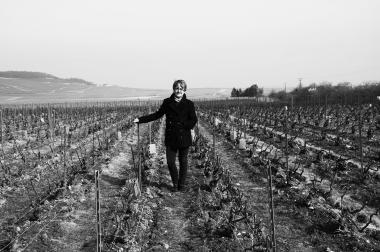
Champagne Corbon
Since 2004 with her father Claude and only since 2006, Agnès Corbon, young dynamic woman, runs this small area of 2.75 ha including 1.10 ha in Avize, the rest of the vineyards being located on the Marne valley and supervised by Jerome, brother of Agnes. The 3 small parcels are located north of Avize, on the edge of Cramant, and more to the east. The vines date from 1964 and 1993 (clones) on rootstock 41B, frequent here. Pascal Agrapart, a caring neighbor, provided advice to Agnes in her early days and continues to help her, according to her requests. Soils, in "chemistry" at the time of Claude Corbon, are partially worked by a provider since the recovery, the ultimate goal being an extension of the work on the whole estate. Average yields of about 11 000 kg / ha allow the marketing of 10 000 bottles per year. Since 2008, a new pneumatic press of 4 000 kg has made it possible to improve the quality of the juices, the second juices being little incorporated. Vinification is carried out in stainless steel vats with seeding for alcoholic fermentation, but without filtration or gluing. Malolactic fermentation is generally avoided except, sometimes, during "cork" prints. The bottling takes place in May or June of the following year, the wines are kept long enough on batten and marketed after several years of rest: 2007 and 2008 have just been disgorged. The usual dosage is 6 g / l. A place to follow ...
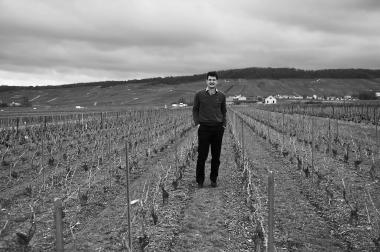
Created in 1937 and based in Avize, this area of more than 15 ha is made up of 9 ha of vineyards on Avize, 4.5 on Oger and 1.4 in Mesnil-sur-Oger. Olivier Bonville, a trained oenologist, is in charge of the operational management. Since 2012, new "Cœur de Terroir" vintages have been created: they are blends of the best juices of the three aforementioned towns, in "cork" bottling. The house sells several vintages "pure Avize" or Avize majority. Since 2011, the estate has been certified HVE (High Environmental Value) and Olivier Bonville is aiming for a clean viticulture: "Today 80% of the vineyard is worked without chemical weed killer with, if necessary, bark, and the objective is to stop using weed killers ". Phytosanitary treatments of the non CMR type are used by gradually decreasing the doses. In the same way the biodiversity is favored as well as the reduction of the fertilization on the vine. Ten people work in the vineyard and cellar under the responsibility of Olivier Bonville who makes all the decisions.
The estate has two 8,000 kg presses. The second juices are isolated in a tank: if they are considered very qualitative, after tasting, they integrate the final assembly, otherwise they are sown in lactic acid bacteria in order to launch the malolactic fermentation. The alcoholic fermentation is triggered with dehydrated yeasts. The wines are on average 3 years on slats and are "tirés" in synthetic capsule or cork stopper.
Like the winemaker, the wines are serious: technically well done, but often too dosed to our taste and sometimes lacking a "bit of madness" or exuberance, it is according to ...
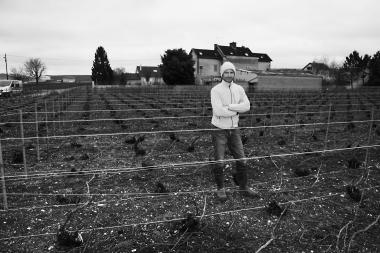
Denis Varnier runs this small 4 hectare estate dating back to 1850 and is based in Avize, although the vineyard is located for only one-third of this town, the other two thirds are spread over Cramant on the one hand and on Oger and Oiry d 'somewhere else. In 1988, Denis took over, BTS viti-ono in his pocket. The 35,000 to 40,000 passes produced each year export for 2/3 (Asia and the USA), the remaining third is sold to individuals. The plots of Avize are located on the sector of Maladreries, Stones Vaudons and the Path of Flavigny. Only two cuvées (see tasting) are predominantly Avize or pure Avize. For the moment Denis Varnier does not work his soils: he justifies it by a fall in potential production, the persistence of copper and high production costs. Bark is spread to avoid weeding. No soil amendment, no anti-rotten products, reasoned cultivation with a programmed reduction of phytosanitary products. The winemaker is, however, well aware that in the long term mowing the grass and mechanical weeding under the rank will be necessary. Denis likes ripe wines, with little acidity: harvest late enough to aim 11 ° natural. He uses an old manual Coquard press of 2000 kg. Alcoholic fermentation is done with native yeasts or yeasts selected according to circumstances, but a bacterial seeding triggers the malolactic fermentation. By refusing aromas of reduced, a micro-bubbler is used with each pumping, while avoiding that the wines do not oxidize excessively. In the cellar, only stainless steel vats. Foaming takes place in capsules that are sufficiently permeable to air. To bottling, 35 mg / l of total sulfur, with the objective of 7 mg / l of free sulfur. The dosage, sometimes substantial, varies according to the cuvées.
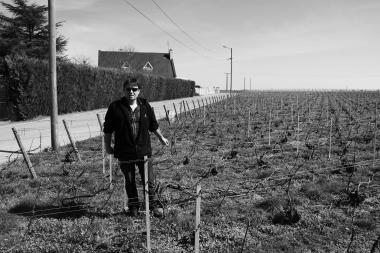
Champagne Sanger
Champagne Sanger is produced by the alumni cooperative of Avize High School, now called Avize Viti Campus. Sanger can be considered a small business whose supply comes from members, alumni spread throughout the Champagne, but also the exploitation of the vines of the high school, the town hall and the retirement home, where a range variety of wines, covering the entire territory of Champagne. On Avize, a little more than 3 ha out of 10 in Sanger's own, mainly on the places-known as Avatars, Oaks and Maladries-Terres de Maladries, sometimes spelled Maladreries. Other parcels also on the Grands Crus of the Côte de Blancs, in Oger and Cramant. Nicolas Robert, operations manager and cellar manager, is currently changing viticultural practices: since 2006, some plots are no longer weeded and soils worked in anticipation of a complete stop of weeding. The fight against powdery mildew uses organic products at the beginning of the campaign, even if phytosanitary treatments are then given, by lowering the doses. Similarly, a trial in organic farming - not certified - was attempted on a subset and we could compare, in clear wines of the 2014 vintage, the juice from the organic plot with a witness in "conventional": the results are uplifting in terms of tension and palatability! The target yield is 10,000 kg / ha. In the winery, two presses, stainless steel tanks and some barrels. The wines are decanted according to the principle of the flotation. Alcoholic fermentation starts with selected yeasts and the malolactic fermentation is often partial. The wines are protected in draft so as to have 5 to 10 mg / l of free sulfur. The dosage, adapted to the style of the wines, is on average 6 g / l.
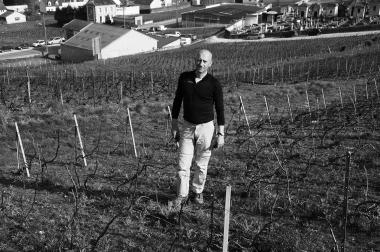
Thierry Callot, the last of the four children of Pierre Callot, former mayor of Avize and holder of the eponymous brand, has been managing since 1996 this estate of more than 7 ha. These are 4.5 ha in Avize on more than 20 separate plots, 0.5 ha in Cramant and 1.2 ha in Grauves, a commune located south of Épernay, classified as 1er Cru and historically linked to the Côte des Blancs, completed by some other small parcels on Cuis and Chouilly. In addition to himself and his wife, Thierry Callot, an oenologist by training, employs 3 full-time employees. Tillage has been effective since 2010, with grass cover in the middle of the row and grass clippings, the frequency of which depends on the dominant varieties. The winemaker is cautious about what he sometimes considers as fads or fads - bio and animal traction - for lack of double-blind trials, properly codified experiments according to him ... It is very attentive to the "health" of his vineyard, particularly in terms of the vigor of the vine, management of missing and combating esca and short knotted. Maturity of the grapes from 10.8 to 11 ° alcohol is sought with a target yield of 10,000 to 11,000 kg / ha. In the vat room, a 4000 kg press, stainless steel vats and barrels. The sizes are assembled with the vintage except in the 2 "heads of vintage" Grand Cru, Vintage and Clos Jaquin. Alcoholic fermentation occurs naturally and malolactic fermentation, when desired, is also carried out using native bacteria. Sulphiting is consequent after pressing - about 5 g / hl, the draw takes place with a content of 10 to 15 mg / l of free sulfur and the shipping liquor is not sulphited. The dosage can be important - according to our tastes - but it fits well in the bottle. Thierry Callot has a strong personality that he seems to have passed on to his wines ...
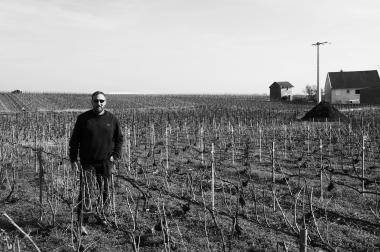
Richard Petit runs, with his wife Véronique nee Bajan, this small property of 3.15 ha in the vineyards located on Avize, Chouilly and Verzenay. Richard is also in charge of the Petit-Le Brun family business and also serves as a shop steward for the Avize winemakers, a rather complex task: it is not always easy to know everything about the estates and parcels even if we have a good knowledge of the vineyard, avizois soils and men.
The Domaine Petit & Bajan sells a Nuit Blanche vintage, mainly from Avize, parcels Les Roches / Chênes, Avats (2 small parcels of 30 and 50 years old), and the Chemins de Chalons bordering Cramant and Oiry. Nuit Blanche is produced at 5,000 bottles, the rest of the production of 3,15 ha is the blend Ambrosie - Chardonnays d'Avize and Pinots noirs de Verzenay - and the rosé Nymphéa, or is sold to the trade. The soils are weeded mechanically for half but also chemically with topkill products called defanants. Charrutage is therefore practiced only partially under the row, in the expectation of having the means to extend it to the entire vineyard.
Richard Petit appreciates ripe wines: he is one of the last to harvest in the town.
In the cellar, a pneumatic press of 4000 kg, stainless steel vats and some barrels for some cuvées of assembly. The alcoholic fermentation, sometimes preceded by an enzymage, is carried out using selected yeasts and the second juices are little used (stock for sowing in lactic acid bacteria). The wines are not very dosed and there is potential that can not yet fully express ...
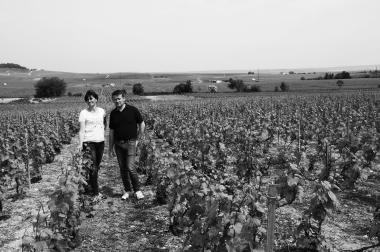
This 11.5 ha estate, managed by Olivier Waris and his wife Stéphanie née Hubert, has nearly 6 ha in the Côte des Blancs, including 2.25 ha in Avize on the place called Les Avats, Haut Nemery, Maladries from the north, the Robards, the Way of Oger. Originally from Cramant, where the winery and the winery are located with 2 horizontal 4,000 kg Coquart presses, Olivier works with a permanent employee, seasonal or occasional workers (the equivalent of 2 full-time employees) and his wife who help, including in the vineyard. This is not too much: besides the activity in the estate, Olivier also provides services to the vineyard for others as well as pressing services. Days very (too?) Charged, so ... Three vintages of Grand Cru Chardonnay are produced: one mainly issue of the terroirs of Cramant with a bit of Avize and Oger and two "pure Avize". A small half of total production is still sold "by the kilo" and export marketing (USA and Japan) is growing.
In the vineyard, soil cultivation has been resumed for 3 or 4 years: in the spring, first plowing at 20 or 30 cm, followed by surface graining. On new plantations, the chase is used and some of the work is done by hand while waiting for animal traction thanks to a service provider. As in many of its neighbors, the reasoned fight is practiced, the use of organic products seems difficult to the winemaker who however plans to test a homogeneous plot that would split in two to compare the results bio / conventional. A yield well below 13 000 kg / ha is targeted to reach 11 ° natural.
In the cellar, moderate sulphiting between 3 and 4 g / hl, cold settling and inoculation to perform the alcoholic fermentation. Malolactic fermentation, when it is desired, is carried out from a stock stem from the sizes sown. Dosages are low, with a non-sulfite shipping liquor. Curious and hard-working man, Olivier Waris performs tests on different containers, the assemblages and the composition of the vintages, with a solera to come. A place to follow.
The lessons of an avizois journey
Certainly the vineyard is globally qualitative - premium old vines! , even if the cultivation methods are not always worthy of a Grand Cru at the high selling price. There is, however, a real awareness of the need to return to fundamentals, land use and practices less interventionist, what some areas in less known areas - valley of the Marne in particular - have understood for a long time.
Moreover, and fortunately, nothing seems completely fixed because, despite the cost of land and the scarcity of transactions, new players seem to be looming on the horizon, partial or total recovery of areas, marketing of parcel cuvées or acquisition of new parcels. It is hoped that they will seek advice from their best-informed colleagues and that they will not give in to the facility of not highlighting their viticultural heritage ...
